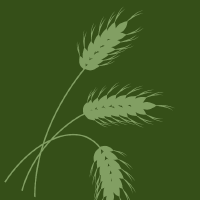Topic Editors




Zero Hunger: Health, Production, Economics and Sustainability
Topic Information
Dear Colleagues,
A severe problem for humanity is the extreme poverty of a significant part of the planet. Malnutrition and hunger are the cause of severe diseases, epidemics and death in the world’s poorest regions. Increasing economic development and productivity are key to achieving the goal of zero hunger. Undoubtedly, this is a complex problem that requires union and joint work from mixed disciplines in order to be rectified. The use of crop and livestock techniques that increase productivity and production in developing countries requires genetic research on seeds and animals. Moreover, it is necessary to develop a sustainable form of agriculture that respects ecosystems and adapts to climate change. All this requires international cooperation to provide the necessary investments in infrastructure and technology while adopting the necessary measures to avoid market distortion in terms of volume and prices.
This Topic aims to bring together research aimed at eradicating hunger in the world from a multifaceted point of view. We welcome contributions covering a broad spectrum of topics, including but not limited to, food safety, health aspects, sustainable crops, commercial practices, legal regulations, trade, business practices, investment, etc. We invite scholars and researchers to submit their original research, empirical studies, theoretical frameworks, and case studies that illuminate the myriad dimensions of the fight against hunger.
Prof. Dr. Richard John Roberts
Prof. Dr. José-María Montero
Prof. Dr. María del Carmen Valls Martínez
Prof. Dr. Viviane Naimy
Prof. Dr. José Manuel Santos-Jaén
Topic Editors
Keywords
- zero hunger
- genetic seed
- sustainable crops
- food safety
- fair trade
Participating Journals
| Journal Name | Impact Factor | CiteScore | Launched Year | First Decision (median) | APC | |
|---|---|---|---|---|---|---|

Economies
|
2.1 | 4.0 | 2013 | 21.9 Days | CHF 1800 | Submit |

Resources
|
3.6 | 7.2 | 2012 | 26.1 Days | CHF 1600 | Submit |

Agriculture
|
3.3 | 4.9 | 2011 | 19.2 Days | CHF 2600 | Submit |

Agronomy
|
3.3 | 6.2 | 2011 | 17.6 Days | CHF 2600 | Submit |

Sustainability
|
3.3 | 6.8 | 2009 | 19.7 Days | CHF 2400 | Submit |

MDPI Topics is cooperating with Preprints.org and has built a direct connection between MDPI journals and Preprints.org. Authors are encouraged to enjoy the benefits by posting a preprint at Preprints.org prior to publication:
- Immediately share your ideas ahead of publication and establish your research priority;
- Protect your idea from being stolen with this time-stamped preprint article;
- Enhance the exposure and impact of your research;
- Receive feedback from your peers in advance;
- Have it indexed in Web of Science (Preprint Citation Index), Google Scholar, Crossref, SHARE, PrePubMed, Scilit and Europe PMC.

